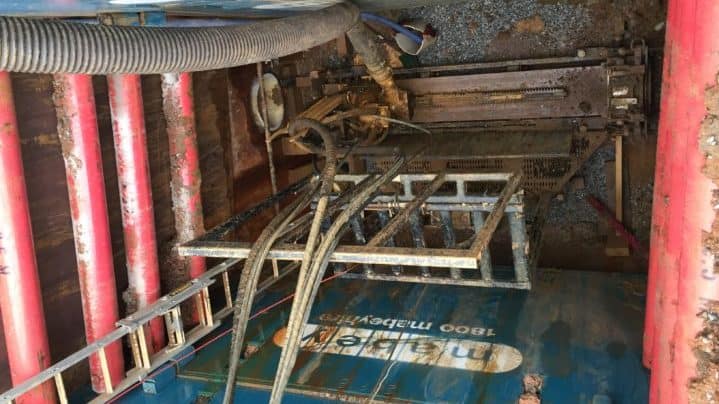Consideration of safety issues is an integral part of the initial stage of the planning process for any construction project, and helps to shape the tendering process. For the pipeline installation sector, having the right equipment and using trenchless methods, among other aspects, can help address these safety issues and reduce the risk of not only an accident happening on-site, but also the risk of time and cost blowouts.
Built for safety
Equipment plays a key role in creating a safe worksite, as older machines will not have as many of the in-built safety mechanisms that newer equipment does.
Stuart Harrison, Managing Director of Edge Underground, said safety for his team begins with using the best equipment available.
“Our team uses the AXIS guided boring system as it has the best operator safety features out of all the microtunnelling equipment in the market,” Mr Harrison said.
“It’s designed with a Falling Object Protective System (FPOS) which is a safety enclosure that the operator sits inside, ensuring they aren’t exposed to the outside environment and protected from anything that might fall into the pit from above.
“The FPOS is unique to the AXIS – no other microtunnelling machine available has a safety enclosure at all.”
As well as the FPOS, the AXIS has a number of noteworthy internal safety mechanisms to help keep personnel safe while completing the drill, including pressure gauges and strike alert.
“The pressure gauges, including a vacuum gauge at the rear of the machine, feed information to the operator to notify them of changes in ground pressure,” Mr Harrison said.
“It’s important to be alerted to these pressure changes as it could signify contact with a trench, which could be housing live wires that weren’t located by DBYD services or pre-project geotechnical surveys.”
The AXIS’ in-built strike alert mechanism alerts the operator if the drill has come into contact with a power cable and the machine has become live. If this occurs, the operator can remain safely within the machine until the power source has been deactivated.
“The risks posed by changes in ground pressure are further mitigated by the AXIS’ ability to retract and complete a pilot line. This allows us to confirm the ground conditions and when we start drilling, any discrepancies that are picked up by the pressure gauges ensures the team can avoid any problems,” Mr Harrison said.
Going trenchless
Specifying a trenchless method of pipeline installation such as microtunnelling in a tender, rather than open cut, can further improve safety outcomes on-site.
According to Safe Work Australia, excavation work is considered dangerous due to the risk of sudden excavation failures which limit the abilities of workers to escape out if a collapse were to occur. With construction work being undertaken in or near shafts or trenches considered particularly high risk. This risk increases the deeper the shaft or trench, with those greater than 1.5m considered high risk.
While for some trenchless methods such as microtunnelling and pipe jacking do require excavation of a shaft, the risks are much less than open cut. Compared to open cut which requires long lengths of trenches to be dug along the length of the pipeline, there is much less excavation needed for the shaft and site supervision is contained to smaller areas. This not only reduces the number of manhours and therefore the incidence of accidents are less, there is also a reduced risk of public interference.

